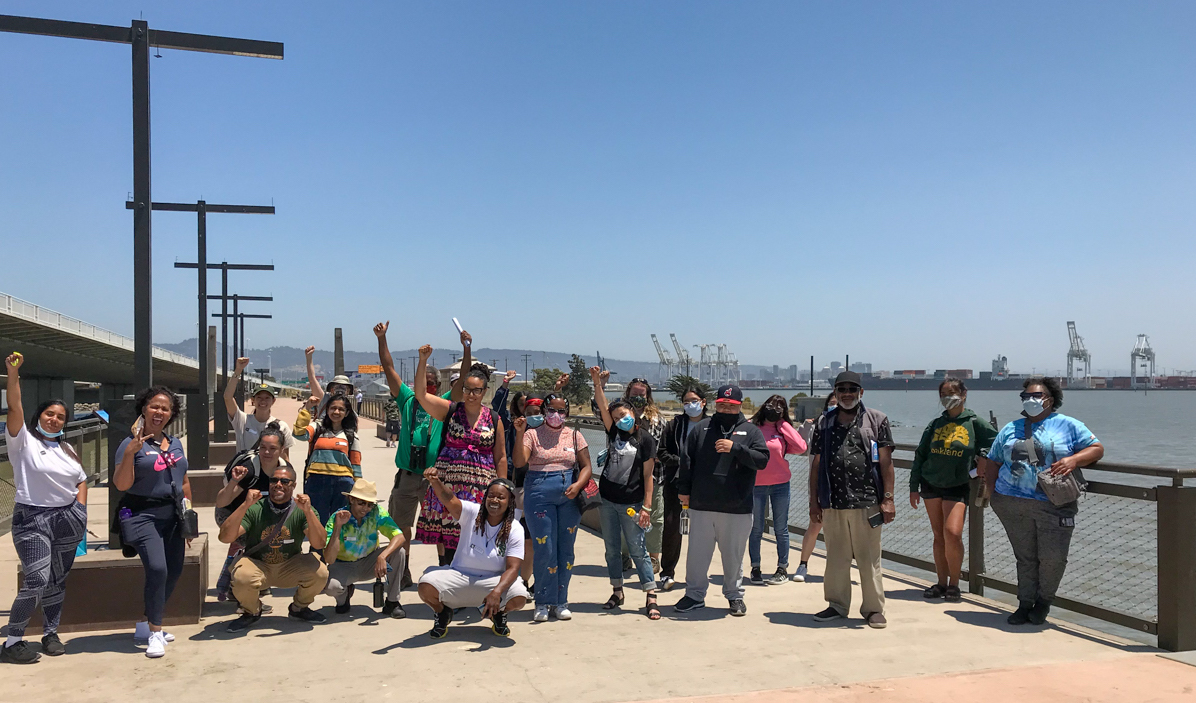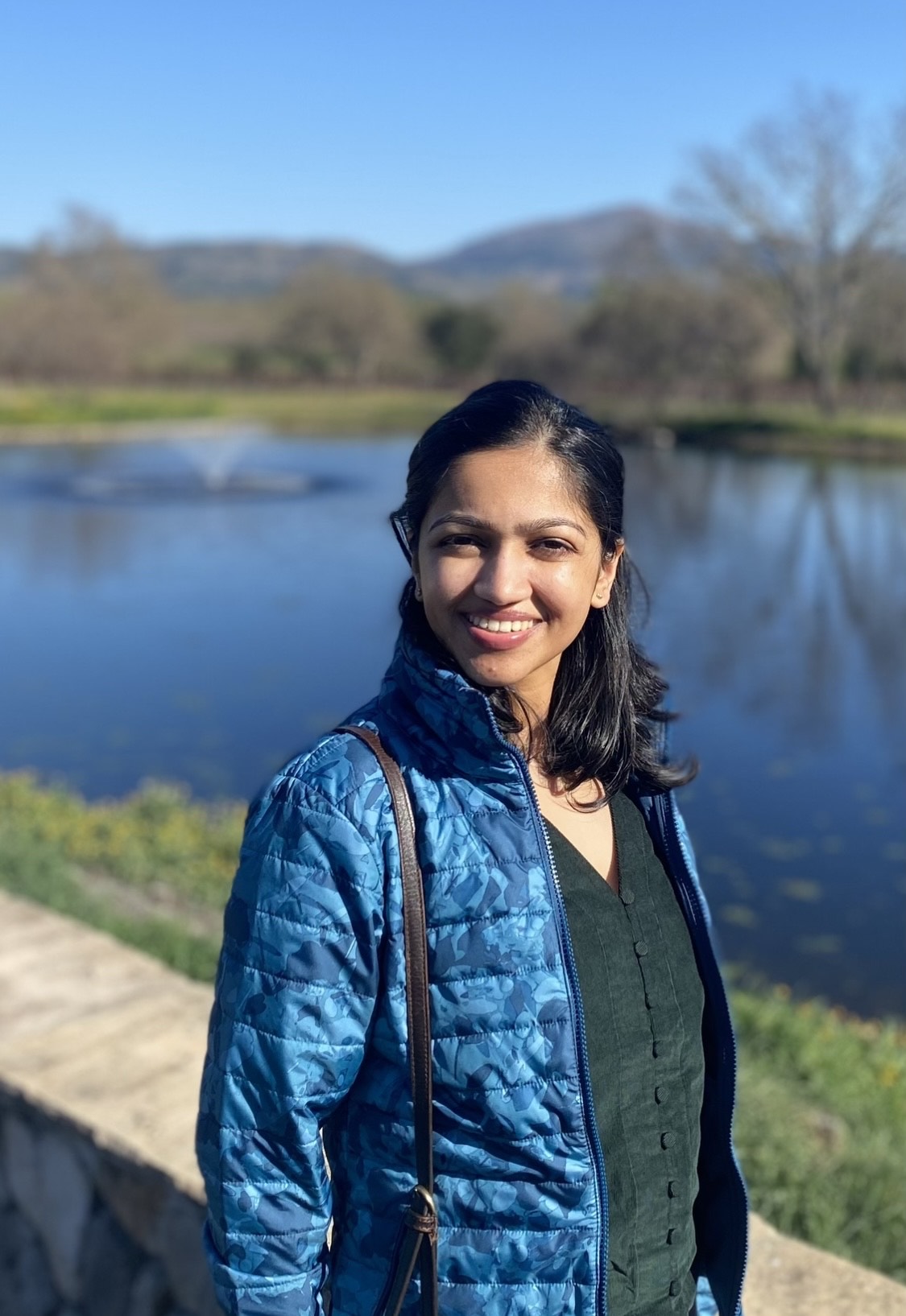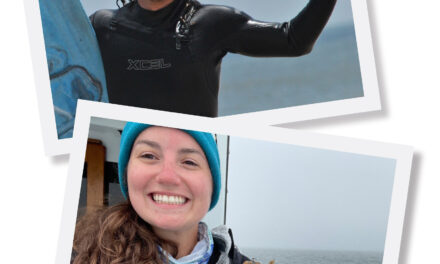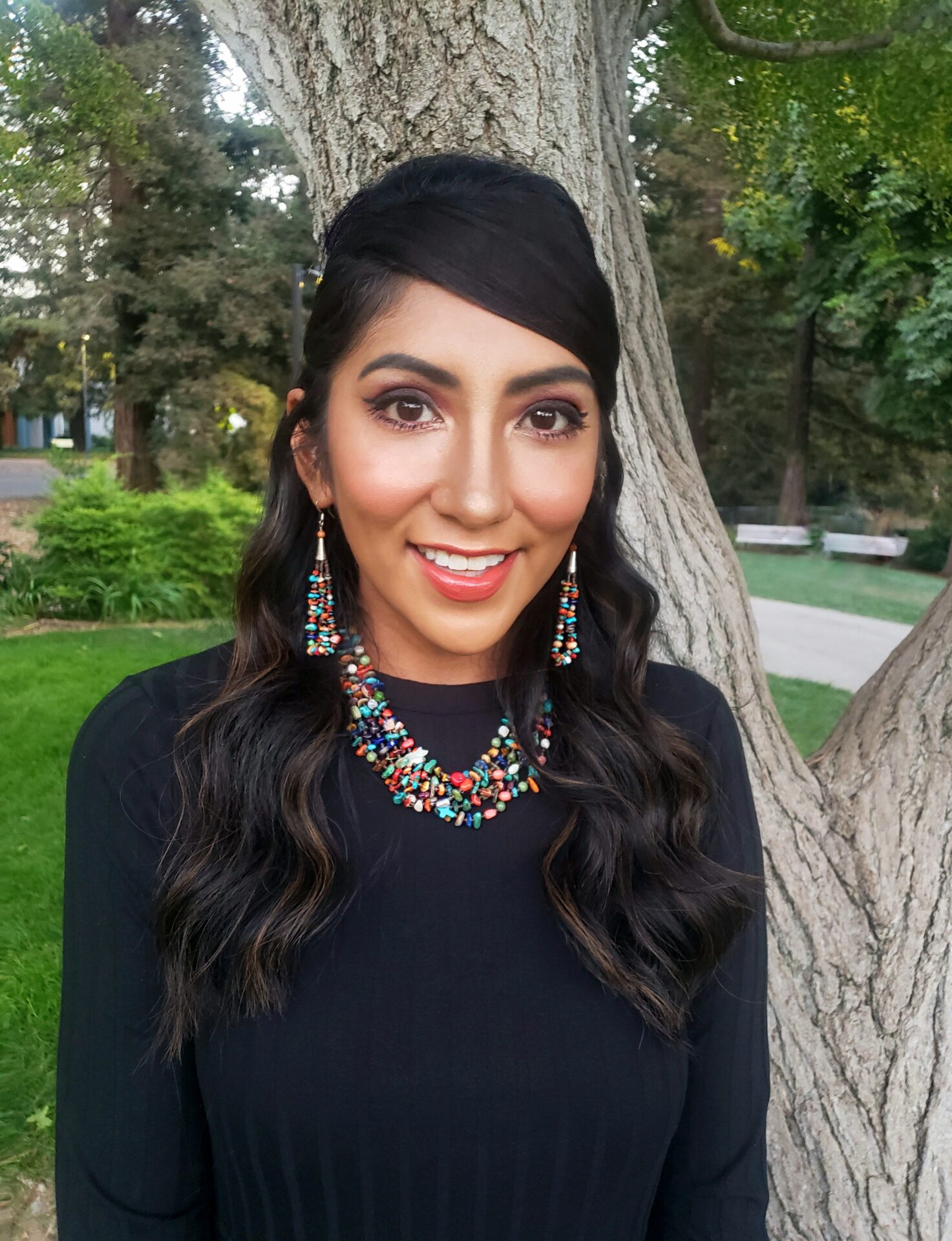“A lot of [environmental] activism is very ‘college’ or white, so I am trying to make it more local and everyday for my students.”
Communities near the Oakland shoreline will experience the worst of future flooding impacts caused by climate change, but 14 local residents are now better prepared to confront the rising water on their doorsteps. For many locals, this kind of preparation has been a long time coming.
“Here in Oakland, it’s almost like the city turns its back on water,” says Maria Katticaran.
Katticaran is one of 14 local residents and change-makers who participated in the inaugural Oakland Shoreline Leadership Academy in the summer and fall of 2021. Through the Academy, participants confronted their proximity to the water by studying shoreline issues (such as the presence of industrial toxins in the soil), visiting sites along the shore, and developing their own shoreline improvement projects. A year later, they are using what they learned to engage communities, to build a resiliency hub for West Oakland neighbors and to design a sacred space for connecting with rising waters.
Katticaran originally comes from Kerala, India, where she says water is regarded as an incredibly vital and precious resource. After a devastating flood hit her hometown while she was living nearly 10,000 miles away in California, she knew she could no longer ignore the impacts of climate change. This, combined with her desire to connect with the needs of her new Oakland community, inspired her to create a masterplan for the shoreline that would lead to a more sustainable, inclusive, and accessible waterfront. While nothing tangible came from her proposal because of a lack of funding, she says that the Academy as a whole was transformational for her mindset, especially as an urban designer.
Maria Katticaran.
“I’ve become much more aware of the importance of community engagement in projects,” she says. “Working in a corporate setting makes it hard, but the program has empowered me to push more to design buildings around the desires of the community.”
After the Academy, Katticaran also decided that rather than turning her back on the water, she would join a “people’s committee” for the San Francisco Estuary, where she continues to honor her cultural connection to water with work on a wetlands restoration project.
The academy paid most of the participants — all community members and neighbors — to take the time to learn about the sea level rise adaptation challenges faced by Oakland. The idea was to provide knowledge and tools for them to more easily participate in shaping their shoreline’s future.
“I think [the program] was a success,” says Phoenix Armenta, who directed the leadership academy’s first semester and now works for the San Francisco Bay Conservation and Development Commission. Armenta says that shifts like Katticaran’s are one of the best things to come out of the program. “Several members have gone on to sit on various committees, train with community members, and also bring what they learned into the classroom to share with students,” Armenta says.
One of the classrooms where information is being shared belongs to Mitzila Valdes, an English and history teacher at Oakland Emiliano Zapata Street Academy. Valdes’ project aimed to gather enough funding to create an environmental studies program similar to the Academy, but at the high school level. While she wasn’t able to reach her funding goal, Valdes continues to do her best to share the climate knowledge she learned in the Academy with her students.
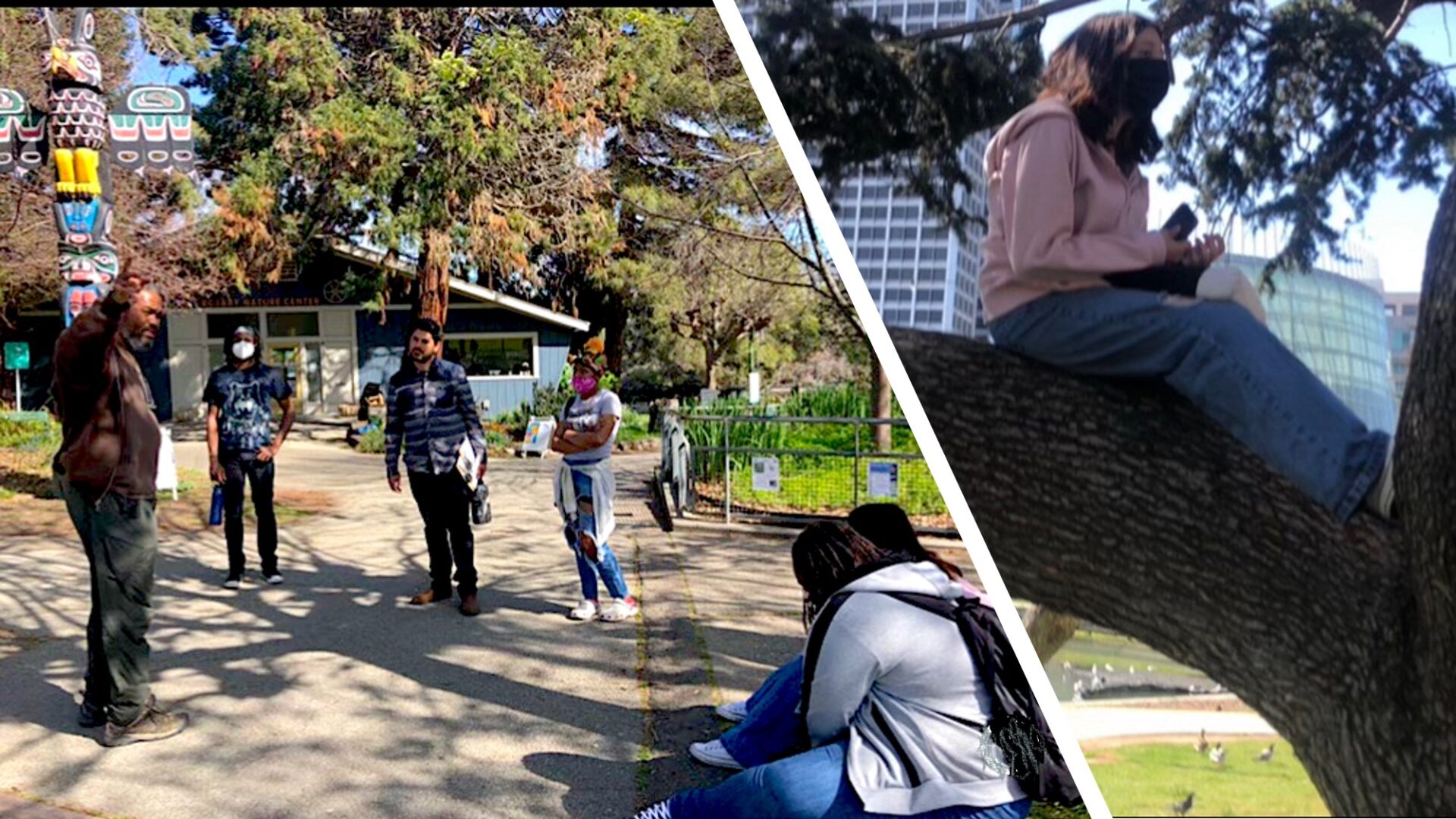
Veldez’s class visits Lake Merritt. Photo: Mitzila Valdes.
“One thing I have done is bring a lot of speakers [the Academy] connected us with to my class. It’s definitely something we’re going to continue,” she says. “For me, it’s about chunking down the information and coming up with action steps, so my students can walk out the door and start participating in something that day.”
Inspired by the inclusivity she felt in the program, Valdes intends to elevate the voices of her students, which she feels are often silenced in conversations around the environment.
“A lot of [environmental] activism is very ‘college’ or white, so I am trying to make it more local and everyday for my students.”
Sometimes, Valdes will even take the students on field trips to some of the same sites she visited during her time in the academy. She hopes to strengthen their connection to nature as well as to increase their “access, agency, and ownership of the shoreline.”
Like Katticaran and Valdes, Adam Garrett-Clark also used an early vision inspired by the Academy to inform a current climate justice venture.
During different site visits to the Oakland shore as part of the Academy, Garrett-Clark noticed several neglected lots that weren’t being utilized due to toxic soil. His Academy project aimed to clean the soil through a process called mycoremediation, which uses pre-existing soil-based fungus to naturally purify the soil. This way, he thought, the vacant lots could be put to better use to create affordable housing, such as a tiny house community.
Though Garrett-Clark hasn’t obtained all of the funding he needs to complete his soil remediation project, he did acquire a small grant for a resilience hub: a community center where neighbors can go in the event of climate disaster to receive resources.
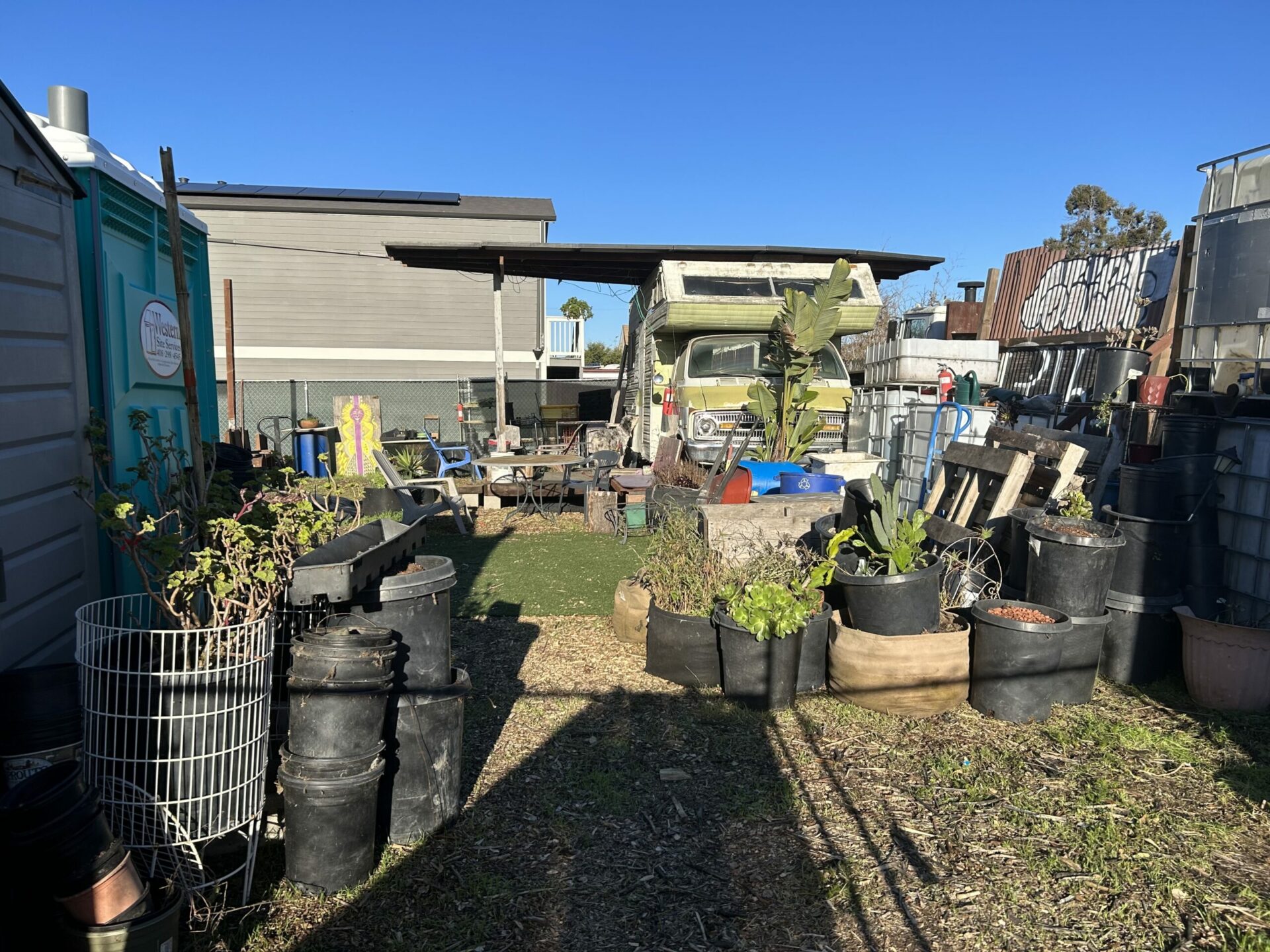
Fledgling resilience hub in West Oakland. Photo: Adam Garrett-Clark.
“Right now it’s a 20-foot RV that we’re building out to be a lab and a kitchen,” he explains. “It’s got a car battery that we’ve repurposed into a battery bank, so that’s the main asset — off-grid energy.”
This hub is located in a previously vacant lot in West Oakland, adjacent to a larger lot that once housed an entire tiny home community, which Garrett-Clark was a part of for eight years.
Next, he is hoping to soon get a grant to test and clean the soil in the lot, so that he can continue toward his goal of creating affordable, eco-conscious housing units.
Another graduate with a vision is further along in overcoming the funding challenge. Shy Walker received an email in mid-December saying that their project “Sacred Spaces” was selected for a workshop grant for design.
“It was very exciting,” they say. “It’s the start of a snowball. Now it’s rolling.”
Walker’s project was born from their omnipresent thoughts about how to make the connection between people and nature stronger in urban spaces. The goal is to redesign two miles of the shoreline and repurpose it as an outdoor sacred space as well as an archive for aspects of Oakland’s cultural history now being diluted by gentrification. Or, as Walker simply puts it: “A space where people can get together, learn something, hear from the community, and add their own stories.”
The space would also be designed to retrofit the land to be more resistant to sea-level rise, not to mention challenging Oaklanders to connect more emotionally and spatially to the water, facing it head-on rather than looking the other way.
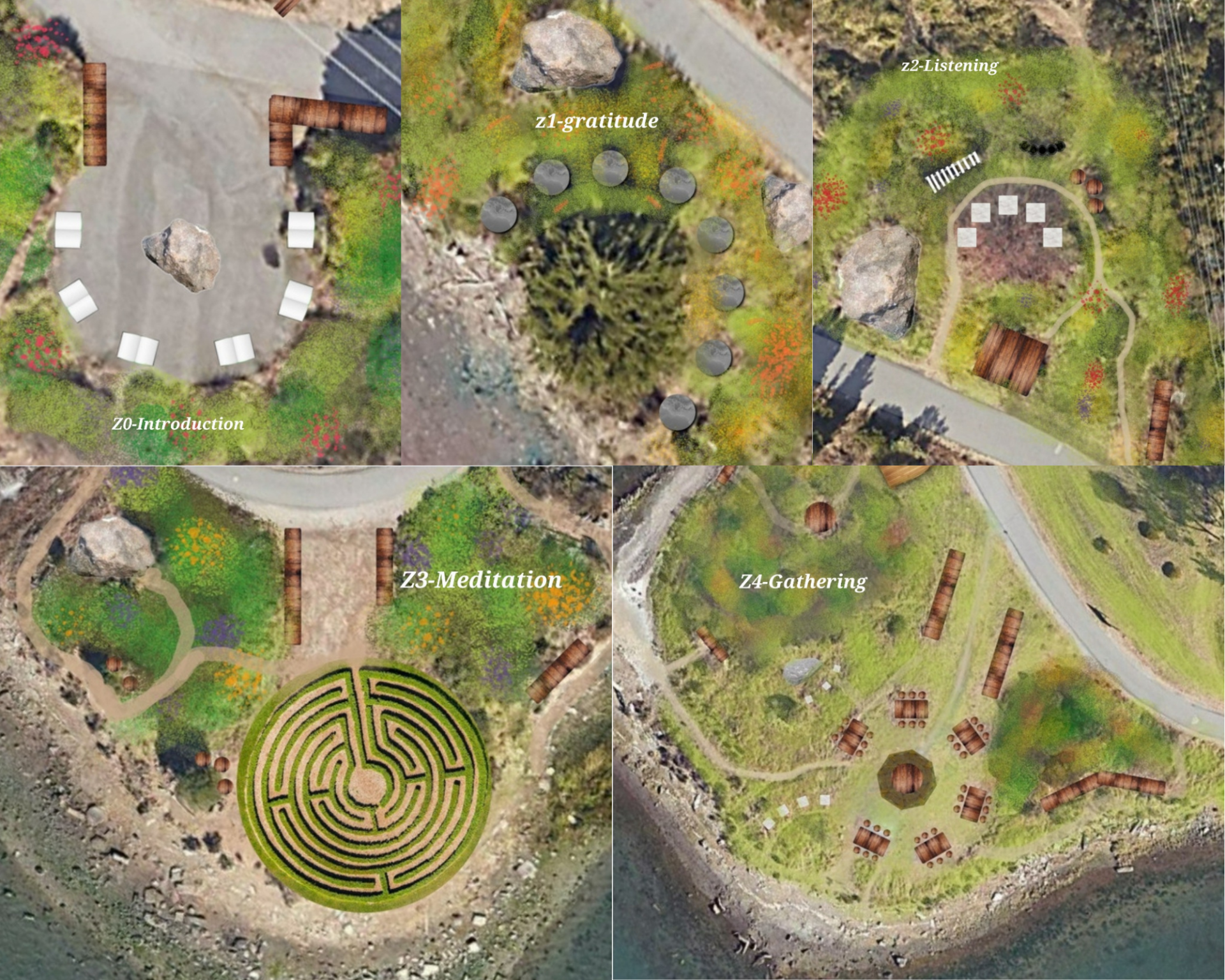
Shy Walker’s design for a sacred space on the Oakland shoreline. Art: Shy Walker.
Walker envisions dividing the space into five zones– zone 0 would be the introduction space, zone 1 is gratitude, 2 is sound, 3 is meditation, and 4 is gathering, each zone expressing a different cultural point.
“There is no major space like this in Oakland where it’s focused and intentional and designed in a way to bring [sacred] life back into the city,” they say.
While reconnecting with the land has always been important to Walker, they credit the Academy with providing the opportunity to expand their thoughts and visualize positive change on their shoreline.
“[The program] was life-changing in a way,” Walker confesses. “It’s completely changed how I look at the environment.”
The region may soon be producing new cohorts of climate leaders on other shorelines around the Bay. In addition to helping with the development of a youth program, Armenta plans to support the continuation of the Academy in other jurisdictions: “Hopefully, we’ll be seeing [the Academy] in one or two places in the future.” For now, Armenta is just proud of all the projects to come out of the leadership training effort and the strides the graduates continue to make in the climate justice space.






